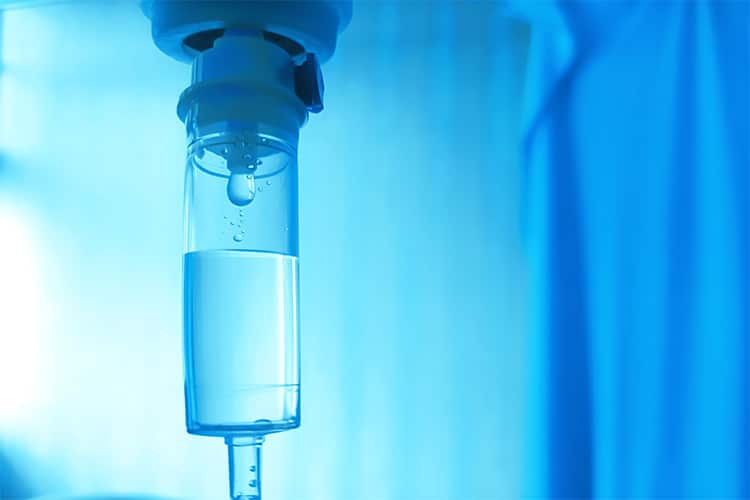
While considered a wear mechanism because it results in material loss, cavitation damage is unique because it happens in the presence of a moving liquid and doesn’t require contact between two components. Also known as cavitation erosion, cavitation damage, and cavitation-induced wear, this surface degradation can look like fine pitting in mild cases — or result in complete perforation of the component in more severe cases.
Cavitation occurs in myriad industries. However, we’ll focus on medical devices and components operating in fluid environments or involve high-speed motion. Here is an overview of the types of cavitation, the impact of cavitation on medical devices, and the various protective measures you can employ to extend component life.
What is Cavitation: Types and Processes
Cavitation can occur in various fluid systems, including hydraulic machinery, pumps, propellers, and medical devices operating in fluid environments. It can have both beneficial and detrimental effects, depending on the type of cavitation and the specific application and conditions under which it occurs.
| Inertial Cavitation | Non-Inertial Cavitation |
| Also known as transient cavitation, inertial cavitation occurs when the local fluid pressure drops below the vapor pressure, forming vapor bubbles. These bubbles subsequently collapse due to increased pressure, generating intense localized forces and high-speed fluid jets. | Also known as stable cavitation or non-damaging cavitation, non-inertial cavitation occurs when vapor bubbles form and persist in the fluid environment but do not collapse violently. Instead, these bubbles oscillate or deform under the influence of pressure fluctuations in the fluid. |
Inertial Cavitation
In medical devices operating in fluid environments, inertial cavitation can have significant implications, including:
- Damage to components. The collapse of vapor bubbles during inertial cavitation can generate high-pressure shockwaves and microjets, which can cause erosion, pitting, and fatigue damage to the surfaces of medical device components. This erosion and damage can compromise the structural integrity and performance of the device over time.
- Reduced performance. In pumps or catheters, cavitation-induced bubbles disrupt the flow of fluids, leading to fluctuations in pressure and flow rates. This may hinder the device’s ability to deliver fluids accurately or efficiently.
- Safety risks. For instance, in ultrasonic surgical instruments, excessive cavitation can produce high-energy shockwaves and microjets that may inadvertently damage surrounding tissues or organs, leading to complications or adverse outcomes for patients undergoing medical procedures.
- Contamination risks. Inertial cavitation can also introduce contaminants into the fluid environment surrounding medical devices. The collapse of vapor bubbles can generate microscale debris or particles from the surfaces of device components, which may contaminate the fluid or compromise its sterility, posing risks to patient safety.
Non-inertial
Non-inertial cavitation provides benefits to various medical equipment and tools.
- Acoustic Imaging and Therapy. In diagnostic ultrasound imaging, controlled non-inertial cavitation of microbubbles can enhance contrast and improve the visibility of tissues or blood vessels. In therapeutic ultrasound, non-inertial cavitation can be utilized to induce controlled mechanical effects on tissues, such as sonoporation or localized heating for targeted therapy.
- Drug delivery. Microbubbles loaded with therapeutic agents can be introduced into the bloodstream and subjected to ultrasound waves, causing them to undergo non-inertial cavitation. This cavitation process can disrupt the microbubble shells and release the encapsulated drugs at specific target sites within the body, offering a non-invasive and targeted approach to drug delivery.
- Cleaning and disinfection. Ultrasonic cleaners generate controlled non-inertial cavitation in liquid solutions, which creates microscale fluid flows and agitation. This cavitation-induced agitation helps remove contaminants, debris, and biofilms from the surfaces of medical instruments, ensuring thorough cleaning and disinfection before reuse.
Impact of Cavitation on Medical Devices
It’s important to note that the risk of cavitation in medical devices depends on several factors, including the device design, operating conditions, and the nature of the fluids involved. Here are some medical devices that may experience cavitation:
Ultrasonic surgical instruments
Devices that use ultrasonic vibrations for cutting or ablating tissue are prone to cavitation. The rapid vibration in a fluid environment can create cavitation bubbles, which may lead to wear and tear on the instrument surfaces.
Dental equipment
Ultrasonic dental scalers, used for cleaning and removing tartar from teeth, can experience cavitation. The ultrasonic waves in the scaler can create microbubbles in the fluid, which collapse and can cause damage over time.
Cardiovascular devices
Certain cardiovascular devices, like mechanical heart valves or ventricular assist devices, operate in a blood environment. They are subject to fluid dynamics that can induce cavitation, potentially leading to material degradation or failure.
Hydrocephalus shunts
These are devices used to drain excess cerebrospinal fluid in patients with hydrocephalus. The valves in these shunts can be affected by cavitation due to fluid pressure changes, impacting their functionality.
Intravascular catheters
High-speed fluid injection through catheters can lead to cavitation. It’s especially likely if there’s abrupt changes in the diameter of the catheter or if the fluid contains dissolved gases.
Diagnostic ultrasound probes
While less common, high-intensity diagnostic ultrasound can potentially induce cavitation in tissues or fluids, which might affect the probe.
Pumps and fluid transfer systems
Medical devices that involve pumping or transferring fluids at high speeds or pressures, such as dialysis machines, can experience cavitation.
Computational fluid dynamics can often predict what medical devices and related components will likely experience cavitation. This knowledge, combined with proactive strategies — material selection and design considerations, such as taking advantage of biochrome coatings’ unique properties, can help reduce the impact of cavitation.
Extending Component Life with Biocompatible TDC Coatings
The impact of cavitation can range from reduced efficiency and lifespan of the device to potential safety risks for patients. As a result, protective measures, such as ME-92 biocompatible thin dense chrome coatings, can play a crucial role in enhancing the durability, longevity, and performance of medical devices.